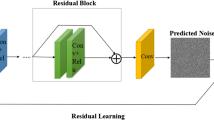Abstract
Currently, block term decomposition is widely utilized to factorize regular convolutional kernels with several groups to decrease parameters. However, networks designed based on this method lack adequate information interactions from every group. Therefore, the Weighted Channel-wise Decomposed Convolutions (WCDC) are proposed in this paper, and the relevant networks can be called WCDC-Nets. The WCDC convolutional kernel employ the channel-wise decomposition to reduce the parameters and computational complexity to the bone. Furthermore, a tiny learnable weighted module is also utilized to dig up connections of the outputs from channel-wise convolutions in the WCDC kernel. The WCDC filter can be easily applied in many popular networks and can be trained end to end, resulting in a significant improvement of model’s flexibility. Experimental results on the benchmark datasets showed that WCDC-Nets can achieve better performances with much fewer parameters and flop pointing computations.











Similar content being viewed by others
References
Abadi M, Agarwal A, Barham P, Brevdo E, Chen Z, Citro C, Corrado GS, Davis A, Dean J, Devin M et al (2016) Tensorflow: large-scale machine learning on heterogeneous distributed systems. arXiv preprint arXiv:1603.04467
Collobert R, Bengio S, Marithoz J (2002) Torch: a modular machine learning software library. Technical report IDIAP-RR 02-46, IDIAP
De Lathauwer L (2008) Decompositions of a higher-order tensor in block terms—part II: definitions and uniqueness. SIAM J Matrix Anal Appl 30(3):1033–1066
Deng J, Dong W, Socher R, Li LJ, Li K, Fei-Fei L (2009) Imagenet: a large-scale hierarchical image database. In: IEEE conference on computer vision and pattern recognition, 2009. CVPR 2009, pp 248–255. IEEE
He K, Zhang X, Ren S, Sun J (2016) Deep residual learning for image recognition. In: The IEEE conference on computer vision and pattern recognition (CVPR), pp 770–778
He K, Zhang X, Ren S, Sun J (2016) Identity mappings in deep residual networks. In: European conference on computer vision. Springer, Berlin, pp 630–645
Hu J, Shen L, Sun G (2017) Squeeze-and-excitation networks. arXiv preprint arXiv:1709.01507
Huang G, Liu Z, Weinberger KQ, van der Maaten L (2017) Densely connected convolutional networks. arXiv preprint arXiv:1608.06993v4
Huang G, Sun Y, Liu Z, Sedra D, Weinberger K (2016) Deep networks with stochastic depth. In: European conference on computer vision. Springer, Berlin, pp 646–661
Ioffe S, Szegedy C (2015) Batch normalization: accelerating deep network training by reducing internal covariate shift. In: International conference on machine learning, pp 448–456
Yangqing J, Evan S, Jeff D, Sergey K, Jonathan L (2014) Caffe: convolutional architecture for fast feature embedding. Eprint Arxiv, pp 675–678
Krizhevsky A, Hinton G (2009) Learning multiple layers of features from tiny images
Larsson G, Maire M, Shakhnarovich G (2016) Fractalnet: ultra-deep neural networks without residuals. arXiv preprint arXiv:1605.07648
Lin M, Chen Q, Yan S (2013) Network in network. arXiv preprint arXiv:1312.4400
Sutskever I, Martens J, Dahl G, Hinton G (2013) On the importance of initialization and momentum in deep learning. In: International conference on machine learning, pp 1139–1147
Szegedy C, Liu W, Jia Y, Sermanet P (2014) Going deeper with convolutions. In: Computer vision and pattern recognition, pp 1–9
Szegedy C, Vanhoucke V, Ioffe S, Shlens J, Wojna Z (2016) Rethinking the inception architecture for computer vision. In: Proceedings of the IEEE conference on computer vision and pattern recognition, pp 2818–2826
Xie S, Girshick R, Dollár P, Tu Z, He K (2016) Aggregated residual transformations for deep neural networks. arXiv preprint arXiv:1611.05431
Yunpeng C, Xiaojie J, Bingyi K, Jiashi F, Shuicheng Y (2017) Sharing residual units through collective tensor factorization in deep neural networks. arXiv preprint arXiv:1703.02180
Zagoruyko S, Komodakis N (2016) Wide residual networks. arXiv preprint arXiv:1605.07146
Zhang T, Qi GJ, Xiao B, Wang J (2017) Interleaved group convolutions for deep neural networks. ArXiv e-prints
Acknowledgements
This work is supported by NSFC fund (61332011), Shenzhen Fundamental Research fund (JCYJ20170811155442454, JCYJ20180306172023949), and Medical Biometrics Perception and Analysis Engineering Laboratory, Shenzhen, China.
Author information
Authors and Affiliations
Corresponding author
Additional information
Publisher's Note
Springer Nature remains neutral with regard to jurisdictional claims in published maps and institutional affiliations.
Rights and permissions
About this article
Cite this article
Lu, Y., Lu, G. & Xu, Y. Weighted Channel-Wise Decomposed Convolutional Neural Networks. Neural Process Lett 50, 531–548 (2019). https://doi.org/10.1007/s11063-019-10032-w
Published:
Issue Date:
DOI: https://doi.org/10.1007/s11063-019-10032-w




